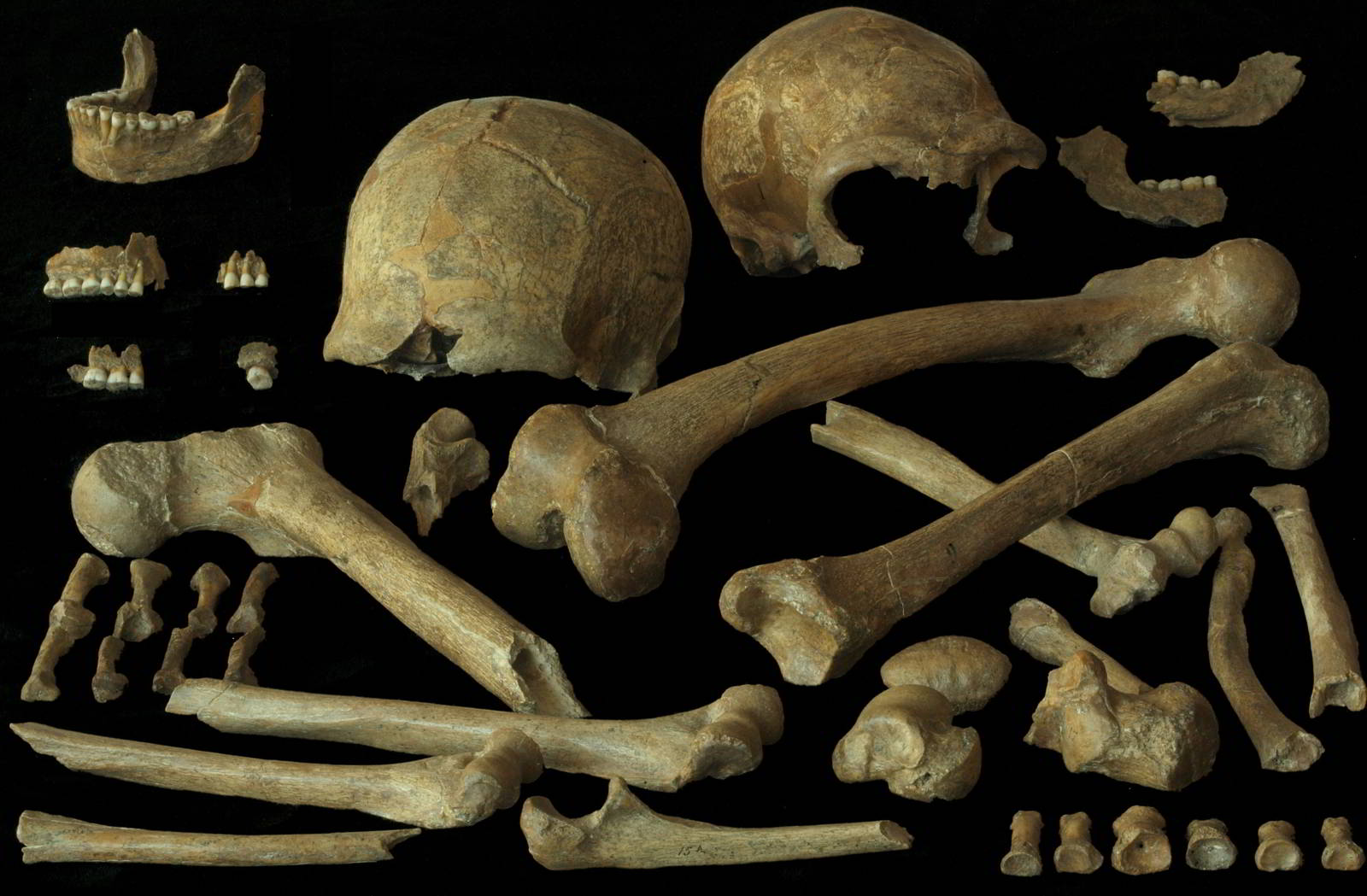News
14.03.2019
Guess who’s coming to dinner?
New study finds evidence of Neandertal cannibalism and mobile modern humans driving mammoths to extinction
A new international study indicates that Neandertals and early modern humans probably had very similar diets, contradicting the assumption that Neandertals died out because their diet was insufficiently varied. But modern humans may have had an advantage because they were more mobile and had better connections over longer distances, according to a team headed by Dr. Christoph Wißing at the University of Tübingen. Together with colleagues from the Senckenberg Centre for Human Evolution and Palaeoenvironment (HEP) in Tübingen, Belgium, France, Spain, Japan and the USA, he compared isotope data from fossil bones of the last Neandertals, early modern humans and animals, drawing new conclusions about the nutrition and migration of human species investigated and the ecosystems of the time. The results of the study have been published in the latest Scientific Reports.
In the Late Pleistocene there were two different species of humans in Europe: the Neandertals and our early modern human ancestors. They coexisted for several thousand years. In the study, the scientists compared stable isotope data from the sites of the Troisième caverne of Goyet, Spy and Scladina in Belgium as well as Lommersum in Germany. Goyet is the only burial site in Europe where the remains of both the last Neandertals and of early modern humans have been found. “It gives us the chance to reconstruct and compare the ecology of both types of humans,” says Christoph Wißing.
The team found that the two species had similar diets, each hunting large mammals such as mammoths and woolly rhinoceros. But it appears to have been the arrival of modern humans which increased the pressure on the slow-breeding mammoth population.
Isotopic analysis suggested the individual mobility history of the modern humans differed considerably within a group. The authors hypothesize that more variable, broader and probably stronger transregional networks existed for modern humans, and that more intensive resource utilization and a more efficient exchange of ideas and possibly people were more typical for the early modern Europeans than for the Neandertals at that time, who appear to have been less mobile.
The researchers found that the Neandertals from Spy were “locals” who hunted most of their prey near the Belgian sites. But the Goyet Neandertals obtained most of their prey outside of the local ecosystem and were therefore classified as non-local. What’s more, the bones of these Neanderthals display evidence of intensive cannibalism. The majority of the Goyet Neandertal bones bear traces of defleshing, disarticulation, and fracturing. This is in contrast with the “local” Neandertals of Spy whose bones show no signs of butchering. It remains unclear where the Neandertals from Goyet originally came from, whether they died at the cave, or if their bones were transported there.
Publication:
Christoph Wißing, Hélène Rougier, Chris Baumann, Alexander Comeyne, Isabelle Crevecoeur, Dorothée G. Drucker, Sabine Gaudzinski-Windheuser, Mietje Germonpré, Asier Gómez-Olivencia, Johannes Krause, Tim Matthies, Yuichi I. Naito, Cosimo Posth, Patrick Semal, Martin Street, Hervé Bocherens. Stable isotopes reveal patterns of diet and mobility in the last Neandertals and first modern humans in Europe. Scientific Reports, www.nature.com/articles/s41598-019-41033-3
Animations:
Animations: Pictures & 3D: Eric Dewamme, Copyright: RBINS / DIGIT-3 Belspo, Licence: CC BY NC ND
Contact:
Dr. Christoph Wißing
University of Tübingen
Biogeology
+49 7071 29-73055
christoph.wissing@uni-tuebingen.de
Contact for press:
Eberhard Karls Universität Tübingen
Public Relations Department
Dr. Karl Guido Rijkhoek
Director
Antje Karbe
Press Officer
+49 7071 29-76789
Fax +49 7071 29-5566
antje.karbe@uni-tuebingen.de
www.uni-tuebingen.de/en/university/news-and-publications.html


